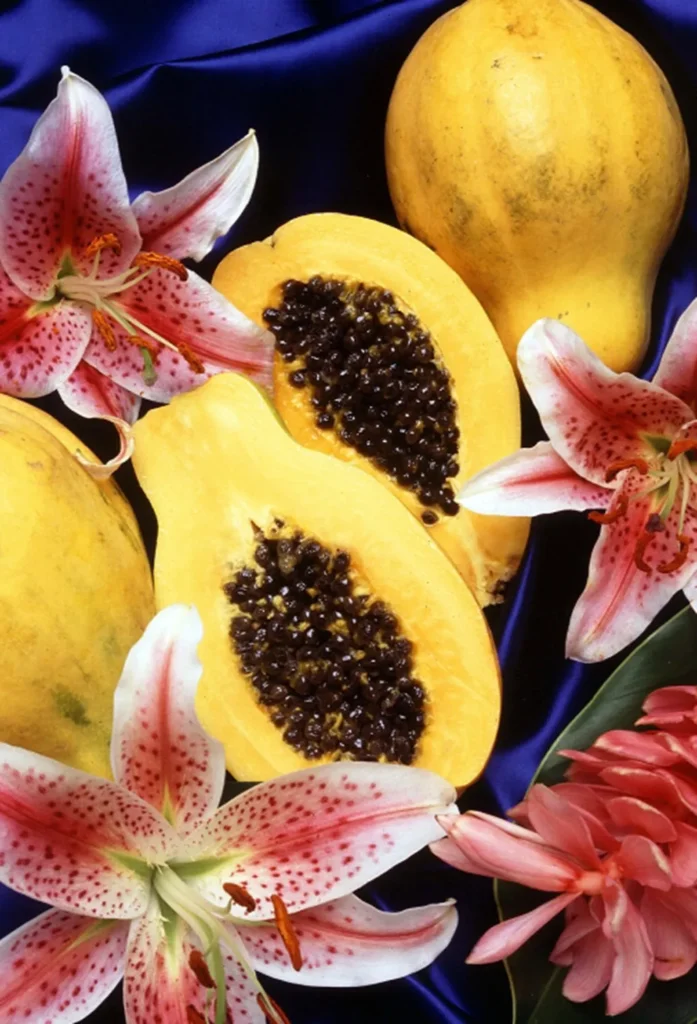In a groundbreaking study published in the journal ‘Plants’, researchers have unraveled the evolutionary history and functional diversity of caleosin (CLO) genes in papaya, offering new insights into the order Brassicales. Led by Zhi Zou from the National Key Laboratory for Tropical Crop Breeding in China, the team conducted the first genome-wide analysis of the caleosin family in papaya, a Caricaceae plant that has not undergone recent whole-genome duplication (WGD). This research could have significant implications for the agriculture sector, particularly in crop improvement and stress resilience.
Caleosins, or peroxygenases, are a class of structural proteins found in lipid droplets. They play crucial roles in oil accumulation, organ development, and stress responses. Despite their importance, the evolution of these genes in the Brassicales order has remained largely unexplored until now. The study identified five caleosin members in the papaya genome, representing both the H and L clades previously proposed in Arabidopsis thaliana.
The research team expanded their analysis to include 68 caleosin genes from 14 representative plant species, revealing seven orthogroups: H1–4 and L1–3. Notably, the H1 and L1 groups were found in the basal angiosperm Amborella trichopoda, suggesting their early divergence before angiosperm radiation. “This early divergence indicates that caleosins have been integral to plant evolution and adaptation,” Zou explained.
The study also highlighted the extensive expansion of the L1 group, driven by species-specific tandem and transposed duplications. These duplications may contribute to environmental adaptation, offering a potential avenue for enhancing crop resilience to stress conditions. Orthologous and syntenic analyses further uncovered that lineage-specific expansion of the caleosin family in Brassicales was largely due to tandem duplication, recent WGDs, and the ancient γ whole-genome triplication (WGT) shared by all core eudicots.
Tissue-specific expression analysis revealed that CpCLO2 and CpCLO5 are constitutively expressed, while others appear to be tissue-specific, implying functional divergence. Interestingly, the H-forms CpCLO1 and RcCLO1 exhibited similar expression profiles to most oleosin genes, which are preferentially expressed in oil-rich tissues such as seeds, endosperms, shoots, and calluses. This suggests their putative involvement in oil accumulation, as observed in Arabidopsis.
The findings provide a comprehensive view of CpCLO genes and offer insights into lineage-specific family evolution in Brassicales. This research not only facilitates further functional studies in papaya and other non-model species but also paves the way for potential applications in agriculture. By understanding the evolutionary patterns and functional diversity of caleosins, researchers can develop strategies to improve crop yield, oil content, and stress resilience, ultimately benefiting the agriculture sector.
As the global demand for sustainable and nutritious crops continues to grow, studies like this one are crucial for driving innovation in agritech. The insights gained from this research could shape future developments in crop improvement, contributing to food security and agricultural sustainability.
The research was led by Zhi Zou from the National Key Laboratory for Tropical Crop Breeding/Hainan Key Laboratory for Biosafety Monitoring and Molecular Breeding in Off-Season Reproduction Regions, Institute of Tropical Biosciences and Biotechnology/Sanya Research Institute of Chinese Academy of Tropical Agricultural Sciences, Haikou 571101, China, and published in the journal ‘Plants’.

